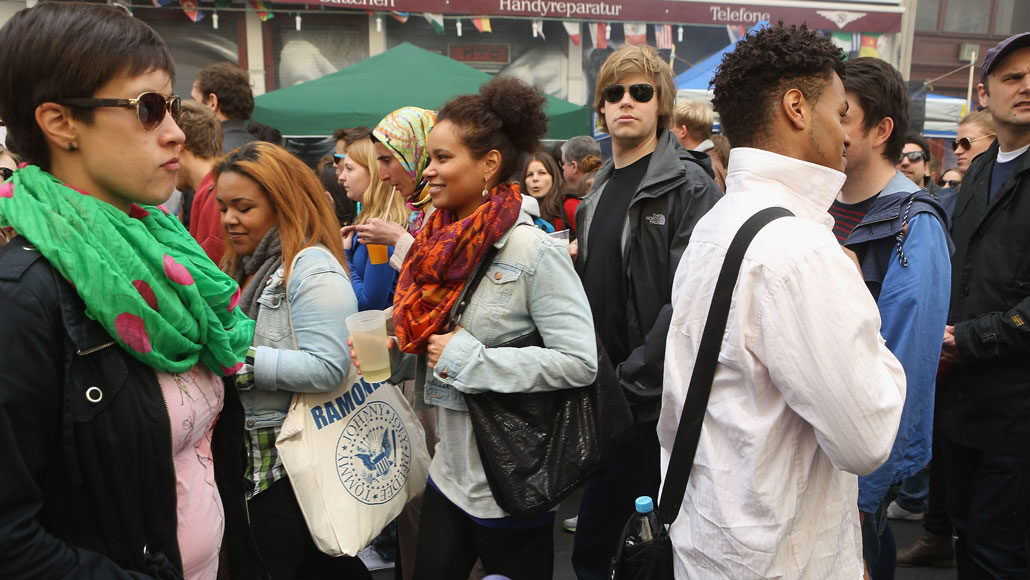Just a tiny share of the DNA in us is unique to humans
This points out how much the interbreeding among ancient hominids has shaped us

Scientists have identified a small share of DNA that might give modern humans the qualities unique to our species.
Sean Gallup/Getty Images
The DNA that make us uniquely human may come in small bits that are sandwiched between what we inherited from our extinct ancestors. Those small bits don’t add up to much. Perhaps just 1.5 to 7 percent of our genetic instruction book — or genome — is uniquely human. Researchers shared their new finding July 16 in Science Advances.
This human-only DNA tends to contain genes affecting how brains develop and function. And that hints that brain evolution is key to what makes us human. But the new research doesn’t yet show exactly what the uniquely human genes do. In fact, two extinct human cousins — Neandertals and Denisovans — may have thought much like humans do.
“I don’t know if we’ll ever be able to say what makes us uniquely human,” says Emilia Huerta-Sanchez. “We don’t know whether that makes us think in a specific way or have specific behaviors,” this population geneticist says. She works at Brown University in Providence, R.I., where she did not take part in the new work.
Researchers at the University of California, Santa Cruz used computers to study human DNA. They studied every spot of it in the genomes of 279 people. At each spot, the team figured out whether that DNA had come from Denisovans, Neandertals or other hominids. Based on these data, they compiled a map of our general mix of genes.
On average, most African people have inherited up to 0.46 percent of their DNA from Neandertals, the new study finds. That was possible because thousands of years ago, humans and Neandertals mated. Their kids inherited some of that DNA. Then they kept passing bits of it down to the next generation. Non-Africans tend to carry more Neandertal DNA: up to 1.3 percent. Some people have a little bit of Denisovan DNA, too.
Each person’s DNA may be about 1 percent Neandertal. Yet look at several hundred people, says Kelley Harris, and most “won’t have their bit of Neandertal DNA in the same place.” Harris is a population geneticist. She works at the University of Washington in Seattle. She did not, however, work on this project. When you add up all the places where someone inherited Neandertal DNA, it makes up a lot of the genome, she says. The researchers figured out that about half of that genome has spots where somebody in the world could have DNA from a Neandertal or a Denisovan.
Like all cousins, humans and Neandertals and Denisovans had common ancestors. Each of the cousins inherited some DNA hand-me-downs from those ancestors. That DNA makes up another big chunk of the genome.
The new study scouted for regions where all people have changes in DNA found in no other species. This showed that between 1.5 percent and 7 percent of our DNA appears unique to humans.
Several periods of interbreeding
Those estimates point to just how much an interbreeding with other hominids appears to have affected our genome, says coauthor Nathan Schaefer. He’s a computational biologist who now works at the University of California, San Francisco. He and his team confirmed what others had shown: Humans bred with Neandertals and Denisovans — and other extinct, unknown hominids. It’s not known whether those mysterious “others” included examples of the newly discovered “Dragon Man” or the Nesher Ramla Homo. Both may be closer relatives to humans than Neandertals.
A genetic mingling probably happened many times between different groups of humans and other hominids, Schaefer and his colleagues report.
Humans evolved DNA that is distinct to us in two bursts, the team found. One likely occurred around 600,000 years ago. (That’s when humans and Neandertals were forming their own branches of the hominid family tree.) The second burst happened some 200,000 years ago. Those are times when small changes appeared only in human DNA, but not in the DNA of other hominids.
Humans and Neandertals went their separate evolutionary ways relatively recently, notes James Sikela. It takes a very long time for cousin species to evolve really different DNA tweaks. As such, he does not find it surprising that only 7 percent or less of our genomes appears uniquely human. “I’m not shocked by that number,” this genome scientist says. He works at the University of Colorado’s Anschutz Medical Campus in Aurora.
As researchers decipher the DNA of more ancient hominids, some DNA that now seems exclusively human might turn out not to be so special, Harris says. That’s why she expects “this estimate of the amount of uniquely human regions is only going to go down.”







